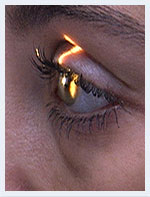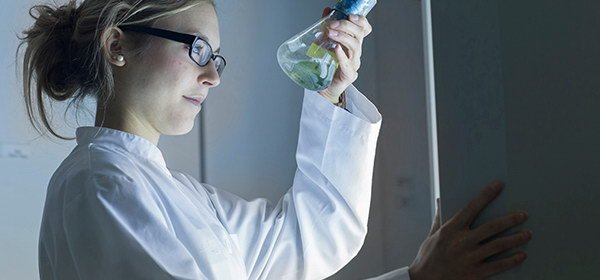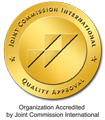Ophthalmology
 The Ophthalmology Service of the Hospital Quirónsalud Torrevieja deals with the diagnosis and treatment of defects and diseases of the vision apparatus and has the continued support of the Ophthalmological Institute of Barcelona, an international reference in the specialty.
The Ophthalmology Service of the Hospital Quirónsalud Torrevieja deals with the diagnosis and treatment of defects and diseases of the vision apparatus and has the continued support of the Ophthalmological Institute of Barcelona, an international reference in the specialty.
Our specialists maintain a constant concern to incorporate the most important advances in the specialty to improve the quality of our service and the diagnostic and therapeutic methods that we apply to our patients. For this reason, the Hospital Quirónsalud Torrevieja has the most advanced technology for both diagnosis and treatment of any ophthalmological pathology. Ophthalmology studies the pathologies of the eyeball, the ocular musculature, the lacrimal system and eyelids and their treatments.
The specialists at Hospital Quirónsalud Torrevieja recommend you go to the ophthalmologist if:
- Suffer loss of vision.
- Appearance of shadows or "flies" in the field of vision.
- Continuous redness of the eyes.
- Symptoms of eye irritation such as itching or stinging.
- In the case of children: if they perceive that they approach things to see them better (TV, books), fatigue problems in studies, headaches, etc..
We also advise you to take good care of your eyesight, follow the following basic and easy to implement tips:
- Alternate periods of visual work with rest periods (for example: rest the view of the computer screen 5 minutes every half hour).
- Use prescription glasses when prescribed by the specialist.
- Reading work with good lighting.
The complete Ophthalmology Service of Hospital Quirónsalud Torrevieja offers a wide range of services in which all eye diseases are treated. For this he puts at your disposal:
- Ophthalmology consultation: includes graduation, ocular tension control, funduscopic examination, preventive ophthalmology, pediatric ophthalmology, glaucoma control, optometry and contact lens adaptation
- Special tests: visual fieldimetry, angiography for the study of retinal diseases, Argon laser (diabetes) and Yag laser (opacities, ocular lens).
- As for surgeries: cataract, glaucoma, retina, strabismus, refractive surgery (Láse Escimer and Intraocular lenses), eyelids and lacrimal ways.
For more detail, you should know more about the following treatments:
- Cataract Surgery: Cataract surgery is an outpatient procedure that is performed without hospitalization with topical anesthesia and now, thanks to technological advances, it is less bothersome for the patient. The surgeon makes a micrometric incision in the peripheral area of the cornea, for This incision introduces the instruments to lift the anterior capsule of the lens, once removed, introduces the phacoemulsifier with which dissolves and aspirates the cataract, then introduces the lens that replaces the lens. This procedure, under normal conditions, is done in a few minutes.
- Implantation of intraocular lenses (IOL) for the treatment of refraction alterations in which there is a major grading defect that contraindicates refractive surgery by laser.
- Glaucoma Treatment: Glaucoma usually responds well to medical treatment. Drops or eye drops are used whose purpose is to reduce the production of aqueous humor, or facilitate their exit from the eyeball. This type of medication the patient should use several times a day to get the intraocular pressure is kept within adequate parameters. When the pressure is not controlled with eye drops, laser or with the combination of both, the last option is surgery. The most used technique is Trabeculectomy, its objective is to create a new route of drainage of aqueous humor. The results are generally very good, achieving a normalization of eye strain with or without medical treatment
- Prevention of eye diseases in childhood: The visual system of a child is in continuous development during the growth stage. Early detection of eye problems during childhood is essential to ensure proper treatment and avoid consequences
- Treatment of Macular Degeneration by:
- Photodynamic therapy with Visudyne. The technique, in particular, is based on the administration of the verteporfin photosensitive drug (Visudyne) that selectively accumulates in the neovascular tissue of the retina. Later it is activated by the application of a non-thermal laser that induces the closure of the new vessels avoiding the loss of vision.
-
Through antiangiogenic. Antiangiogenic drugs belong to a family of medicines that have revolutionized the treatment of cancer, and are indicated for the treatment of AMD regardless of the subtype, the location and the size of the lesion and the visual acuity of the patient. The antiangiogenics that are currently used are: Maculen, Lucentis, Avastin.
- Diabetic retinopathy.
- Macular Hole: A macular hole is a solution of continuity in the retinal thickness that affects the foveal area. The hole can be partial or total, can occur as a result of trauma, a chronic macular edema or as it happens more often can be idiopathic.
- Central serous chorioretinopathy.
- Treatment of strabismus: we can distinguish two possibilities: The first is the treatment of visual acuity decrease, with special relevance in the case of amblyopia. Amblyopia should be treated with eye patches or other methods of occlusion or penalization that block the healthy eye, in order to stimulate the development of good vision of the lazy eye. The correction of hyperopia or myopia is fundamental for the treatment of accommodative strabismus or directly related to accommodation. The second is the treatment by surgery. Surgical correction is recommended in congenital strabismus, and in other types of strabismus if the deviation is very striking and permanent, but always under the discretion of the surgeon ophthalmologist.
-
Lacrimal tract surgery: surgery indicated when there is a lacrimal obstruction that could not be resolved by repeated drug treatment. Lacrimal obstruction is a relatively common problem in newborns. Up to 50% of newborns have this problem. The development of the lacrimonasal canal is completed after birth, and only 5% of affected children will present this problem after 2 months of life. The most common location of the obstruction is in the lacrimonasal canal, a passage through which tears travel before reaching the nose. This duct is lined internally by a mucosa. The lacrimal obstructions in adults are solved surgically. It is not possible to remedy this problem with non-surgical procedures. Depending on the location, the surgical solution is: Dacryocystorhinostomy: This operation produces a by-pass of the lacrimal duct, making a new communication to the nose. Lacrimal Dorsal Obstruction: This procedure is intended for the surgical opening of the lacrimal dots, when these are obstructed. It is a minimally invasive microsurgery, since it is performed with local anesthesia in an ambulatory way. Unit of Refractive Surgery
Refractive surgery is performed to correct refractive errors of the eye and achieve optimal vision without the use of glasses or contact lenses. It is applied in cases of myopia, hyperopia, astigmatism and presbyopia.
Hospital Quirónsalud Torrevieja
© 2024 Quirónsalud - All rights reserved























